 W
WJosé Vicente Anaya was a Mexican writer, poet and cultural journalist.
 W
WMariano Azuela González was a Mexican author and physician, best known for his fictional stories of the Mexican Revolution of 1910. He wrote novels, works for theatre and literary criticism. He is the first of the "novelists of the Revolution," and he influenced other Mexican novelists of social protest.
 W
WXhevdet Bajraj is an ethnic Albanian Kosovar poet and screenwriter now residing in Mexico.
 W
WRubén Bonifaz Nuño was a Mexican poet and classical scholar.
 W
WRamón Bravo was a Mexican diver, photographer and underwater filmmaker. Bravo was the person who made the phenomenon of sleeping sharks known to the world.
 W
WRoberto Cabral del Hoyo was a Mexican historian and writer.
 W
WFederico Campbell Quiroz, known as Federico Campbell, was a writer from northern Mexico. Campbell is known for the short story collection Tijuanenses. In 2000, he won the Colima Prize for Fiction with his novel Transpeninsular. In 1995, he was awarded the J. S. Guggenheim Fellowship. Campbell translated works by Harold Pinter, David Mamet, and Leonardo Sciascia, among others, into Spanish.
 W
WAntonio Castro Leal was a Mexican diplomat and intellectual.
 W
WAlí Chumacero Lora was a Mexican poet, translator, literary critic and editor. He was a member of the Mexican Academy of Language.
 W
WJosé Isidro Fabela Alfaro was a Mexican judge, politician, professor, writer, publisher, governor of the State of Mexico, diplomat, and delegate to the now defunct League of Nations. Fabela was born in Atlacomulco, Mexico State. He was a member of the group of intellectuals opposed to the Porfirio Díaz regime, the Ateneo de Juventud, a group that also included José Vasconcelos and Diego Rivera. He served prominently revolutionary leader Venustiano Carranza and went on to hold many important posts in the Mexican government.
 W
WCarlos Fuentes Macías was a Mexican novelist and essayist. Among his works are The Death of Artemio Cruz (1962), Aura (1962), Terra Nostra (1975), The Old Gringo (1985) and Christopher Unborn (1987). In his obituary, The New York Times described Fuentes as "one of the most admired writers in the Spanish-speaking world" and an important influence on the Latin American Boom, the "explosion of Latin American literature in the 1960s and '70s", while The Guardian called him "Mexico's most celebrated novelist". His many literary honors include the Miguel de Cervantes Prize as well as Mexico's highest award, the Belisario Domínguez Medal of Honor (1999). He was often named as a likely candidate for the Nobel Prize in Literature, though he never won.
 W
WJomí García Ascot was a poet, essayist, filmmaker, director and educator. Born in Tunisia, he was a Spanish exile who lived in Mexico.
 W
WJuan García Ponce was a Mexican novelist, short-story writer, essayist, translator and critic of Mexican art.
 W
WAlejandro González Iñárritu is a Mexican film director, producer, and screenwriter. He is known for telling international stories about the human condition, and his projects have garnered critical acclaim and numerous accolades.
 W
WEnrique González Martínez was a Mexican poet, diplomat, surgeon and obstetrician. His poetry is considered to be primarily Modernist in nature, with elements of French symbolism.
 W
WRodrigo González,, better known as Rockdrigo or El profeta del nopal, was a Mexican singer-songwriter. He died at age 35 with his girlfriend, Francoise Bardinet, when the apartment building in which he was living collapsed in the Mexico City earthquake of September 19, 1985. His early death made him a legend in Mexican rock.
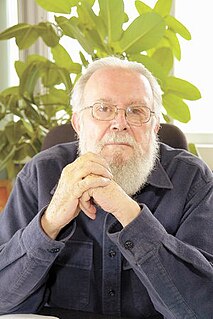 W
WHugo Gutiérrez Vega was a Mexican poet, lawyer, writer, academic, actor and translator. In addition to his writings, Gutiérrez Vega, a career diplomat, served as Mexico's Ambassador to Greece from 1987 to 1994, which included concurrent accreditation as Ambassador to Cyprus, Lebanon, Moldova, and Romania. His diplomatic postings influenced his literary writings. In an October 2007 interview with La Jornada, Gutiérrez noted that he had written one book in every foreign city in which he had lived, including Washington D.C., Rio de Janeiro, London, and San Juan, Puerto Rico. His poetry has been translated into English, French, Italian, Greek, Portuguese, Russian and Romanian.
 W
WMartín Luis Guzmán Franco was a Mexican novelist and journalist. Along with Mariano Azuela and Nellie Campobello, he is considered a pioneer of the revolutionary novel, a genre inspired by the experiences of the Mexican Revolution of 1910. He spent periods in exile in the United States and Spain. He founded newspapers, weekly magazines, and publishing companies. In 1958, he was awarded Mexico's National Prize in Literature.
 W
WEfraín Huerta was a Mexican poet and journalist. Born and raised in the state of Guanajuato, he moved to Mexico City initially to start a career in art. Unable to enter the Academy of San Carlos, he attended the Escuela Preparatoria Nacional, where he met writers such as Rafael Solana, Carmen Toscano and Octavio Paz. He had been writing poetry since he was young, but initially opted to attend law school; however, when he published his first book of poems, he left it to pursue writing full-time. As a poet, he published regularly from the 1930s to the 1980s, and as a journalist collaborated with over twenty newspapers and journals, under his own name and using pseudonyms. He was also active politically, a communist and Stalin supporter through his life with his social and political ideas finding their way into his writing. Poetically, he is part of the Taller generation of Mexican poets, although his development was a bit different from others in this group. Near the end of his career, his work had developed a colloquial style, including work focusing on Mexico City and creating a new form called a “poemínimo.”
 W
WFayad Jamís (1930–1988) was a Cuban poet, painter, designer, journalist and translator. He was born in Zacatecas, Mexico to a Lebanese-Cuban father and a Mexican mother. Moving to Cuba at the age of six, Jamis trained at the San Alexandro Academy before gaining renown as an abstract painter. He was a member of the modernist group of Cuban painters known as "Las Once".
 W
WHernán Lara Zavala is a Mexican novelist, literary critic and academic at the National Autonomous University of Mexico.
 W
WGabriel Fernández Ledesma was a Mexican painter, printmaker, sculptor, graphic artist, writer and teacher. He began his career working with artist Roberto Montenegro then moved into publishing and education. His work was recognized with two Guggenheim Fellowships, the José Guadalupe Posada medal and membership in the Salón de la Plástica Mexicana.
 W
WGermán List Arzubide was a Mexican poet and revolutionary.
 W
WRicardo López Méndez was a Mexican poet and song lyricist. He was born in Izamal, Yucatán. He became director of the Public Library and an advisor to Felipe Carrillo Puerto, governor of Yucatán from 1922 to 1924. In 1927 he moved to Mexico City as a representative of the government of Yucatán. He was a founder of the radio station XEW and a pioneer of the use of radio to access rural populations. He also became vice president of the Society of Authors and Composers (SACM).
 W
WRamón López Velarde was a Mexican poet. His work was a reaction against French-influenced modernismo which, as an expression of a purely Mexican subject matter and emotional experience, is unique. He achieved great fame in his native land, to the point of being considered Mexico's national poet.
 W
WIgnacio Mariscal was a Mexican liberal lawyer, politician, writer, and diplomat. He was named Secretary of Foreign Affairs in 1871–72, for the first time during the Benito Juárez administration. During the Porfirio Diaz's government, he held the office in 1880–83 and 1885–1910. In 1909, he was the President of Mexican Academy of the Language.
 W
WEnrique Márquez Jaramillo, known in Mexico and abroad as Enrique Márquez, is a poet, historian and Mexican politician. In early 1994 Márquez participated in the Commission for Peace and Reconciliation in the southeastern Mexican state of Chiapas, with a focus on the Zapatista Army of National Liberation uprising. From 2007 to 2010, he organized the bicentennial independence anniversary and Mexican Revolution centennial celebrations in Mexico City. At the end of 2012, Márquez convened the World Summit of Outraged Dissidents and Insurgents in the city.
 W
WAlexandro Martínez Camberos was a Mexican poet, writer, lawyer and judge. He published articles and essays in several newspapers and wrote books on poetry, jurisprudence and social issues.
 W
WEduardo Martínez Celis was a Mexican journalist, author and politician. Pseudonym: Abbé Sieyès
 W
WEduardo Milán is a Uruguayan author who has written over twenty books of poetry, several collections of criticism, and two anthologies of Spanish-language poetry. He was born in Rivera, Uruguay, in 1952. His mother died when he was a year old, and when he was a teenager his father was sent to prison for being affiliated with the Tupamaro guerrilla movement.
 W
WCarlos Montemayor was a Mexican novelist, poet, essayist, literary critic, tenor, political analyst, and promoter of contemporary literature written in indigenous languages. He was a Member of the Mexican Academy of the Language.
 W
WMarco Antonio Montes de Oca was a Mexican poet and painter.
 W
WFabio Morábito is a Mexican writer and poet.
 W
WAmado Nervo also known as Juan Crisóstomo Ruiz de Nervo, was a Mexican poet, journalist and educator. He also acted as Mexican Ambassador to Argentina and Uruguay. His poetry was known for its use of metaphor and reference to mysticism, presenting both love and religion, as well as Christianity and Hinduism. Nervo is noted as one of the most important Mexican poets of the 19th century.
 W
WManuel José Othón was a Mexican poet, playwright, and politician. One of his most famous works is Idilio salvaje, considered one of the most representative poems of Mexico.
 W
WJosé Emilio Pacheco Berny audio (help·info) was a Mexican poet, essayist, novelist and short story writer. He is regarded as one of the major Mexican poets of the second half of the 20th century. The Berlin International Literature Festival has praised him as "one of the most significant contemporary Latin American poets". In 2009 he was awarded the Cervantes Prize for his literary oeuvre.
 W
WMario Santiago Papasquiaro is the pen name of José Alfredo Zendejas Pineda. Mexican poet and co-founder of the infrarrealista poetry movement.
 W
WCarlos Pellicer Cámara, born in Villahermosa, Tabasco, was part of the first wave of modernist Mexican poets and was active in the promotion of Mexican art, pictures, and literature. An enthusiastic traveler, his work is filled with depictions of nature and a certain sexual energy that is shared with his contemporary Octavio Paz.
 W
WAlfredo Placencia, was a Mexican priest and poet. Known as Alfredo R. Placencia, his works include El libro de Dios (1924), El paso del dolor (1924), Del cuartel y del claustro, y Poesías (1959) (Poems). His remains are in the Rotonda de los Hombres Ilustres, placed within the mausoleum of the Panteón de Belén.
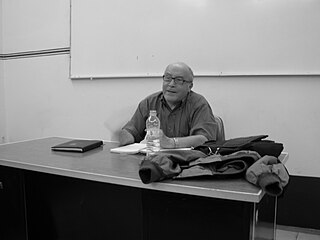 W
WRenato Prada Oropeza was a Bolivian and Mexican scientist-literary researcher and writer, author of novels, short stories and poetry books, hermeneutics, semiotics and literary theory. Many of his literary works have been translated into several languages. He was one of the most distinguished semioticians in Mexico and Latin America.
 W
WJuan Manuel Puig Delledonne, commonly called Manuel Puig, was an Argentine author. Among his best-known novels are La traición de Rita Hayworth, Boquitas pintadas, and El beso de la mujer araña which was adapted into the film released in 1985, directed by the Argentine-Brazilian director Héctor Babenco; and a Broadway musical in 1993.
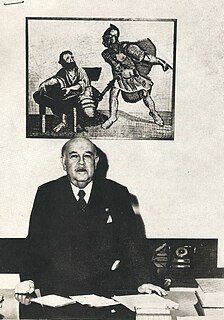 W
WAlfonso Reyes Ochoa was a Mexican writer, philosopher and diplomat. He was nominated for the Nobel Prize in Literature five times.
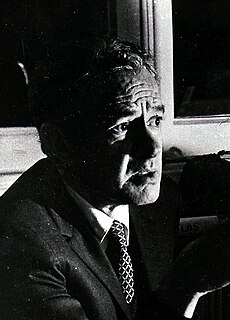 W
WJuan Nepomuceno Carlos Pérez Rulfo Vizcaíno, best known as Juan Rulfo, was a Mexican writer, screenwriter and photographer. He is best known for two literary works, the 1955 novel Pedro Páramo, and the collection of short stories El Llano en llamas (1953). This collection includes the popular tale "¡Diles que no me maten!".
 W
WPablo Soler Frost is a Mexican novelist, essayist, translator, playwright, short-story and screen writer. A polyglot, he has translated into Spanish several works and poems by Shakespeare, Walpole, Walter Scott, Shelley, John Henry Newman, Joseph Conrad, Robert Frost, Rainer M. Rilke, Theodor Daübler and Joanna Walsh.
 W
WCarlos Solórzano Fernández was a Guatemalan born Mexican playwright. He is considered one of the most important playwrights in Guatemalan history. His contribution to the theater in Latin America range from his plays to articles in theater journals and encyclopedias, and essays related to the history and anthology of Latin theater.
 W
WJosé Juan Tablada was a Mexican poet, art critic and, for a brief period, diplomat. A pioneer of oriental studies, and champion of Mexican art, he spent a good portion of his life outside his country. As a poet, his work spans from the fin-de-siècle style to avant-garde experimentalism; he was especially an early haiku pioneer.
 W
WMiguel Torruco Marqués is an entrepreneur, academic and Mexican public official. He was the Secretary of Tourism of the Federal District from 2012 to 2017. In 2017, he became a Tourism Adviser of Andrés Manuel López Obrador, president of National Regeneration Movement (MORENA).
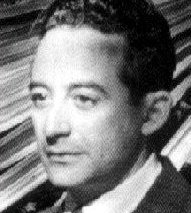 W
WXavier Villaurrutia y González was a Mexican poet, playwright and literary critic whose most famous works are the short theatrical dramas called Autos profanos, compiled in the work Poesía y teatro completos, published in 1953.